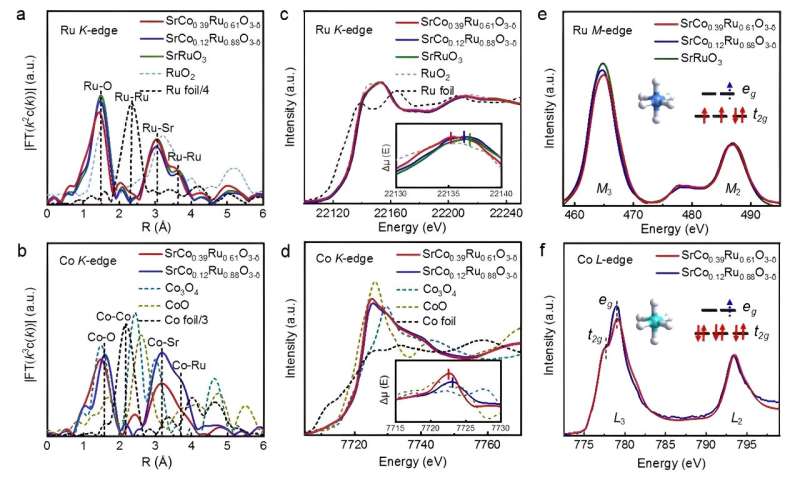This article has been reviewed according to Science X's editorial process and policies. Editors have highlighted the following attributes while ensuring the content's credibility:
fact-checked
peer-reviewed publication
trusted source
proofread
Researchers propose doping strategy for efficient urea electrosynthesis

A research team led by Prof. Yan Wensheng from the University of Science and Technology of China (USTC) has proposed a doping engineering strategy that breaks the scaling relationship of intermediate binding and minimizes the kinetic barrier of C-N coupling while realizing both high activity and high selectivity in urea electrosynthesis. The study is published in Angewandte Chemie International Edition.
The research team has devised an innovative catalyst featuring two independent active sites. These active sites function as reaction centers for different functional groups, thereby facilitating multiple crucial steps in the urea synthesis reaction.
The design broke the limitation of traditional catalysts, which typically possessed only a single active site. In addition, it also opened up new avenues for enhancing the catalyst's activity and selectivity.
The researchers successfully synthesized a series of SrRuO3 catalysts with varying concentrations of Co in experiments. By adjusting the Co concentration, they aimed to optimize the catalyst's performance and identify the optimal catalytic effect. Among this series of catalysts, the SrCo0.39Ru0.61O3-δ catalyst exhibited exceptional catalytic activity and selectivity.
X-ray absorption spectroscopy (XAS) and high angle annular dark-field scanning TEM (HAADF-STEM) image indicated that Co ions were in an occupied position, and the introduction of Co increased oxygen vacancies and the 4d electron state density of Ru. XAS and SR-FTIR revealed that Co and Ru sites were the active centers for the formation of *CO and *NH2 intermediates.
It was found that oxygen vacancies regulate the electronic structures of Co and Ru, weakening intermediate adsorption. While the strain of the Co-Ru dual site promoted C-N coupling and prevented the formation of by-products.
This research provides novel insights into the design of electrocatalysts for urea synthesis and the understanding of related electrocatalytic mechanisms.
More information: Liyang Lv et al, Breaking the Scaling Relationship in C−N Coupling via the Doping Effects for Efficient Urea Electrosynthesis, Angewandte Chemie International Edition (2024). DOI: 10.1002/anie.202401943
Journal information: Angewandte Chemie International Edition
Provided by University of Science and Technology of China


















